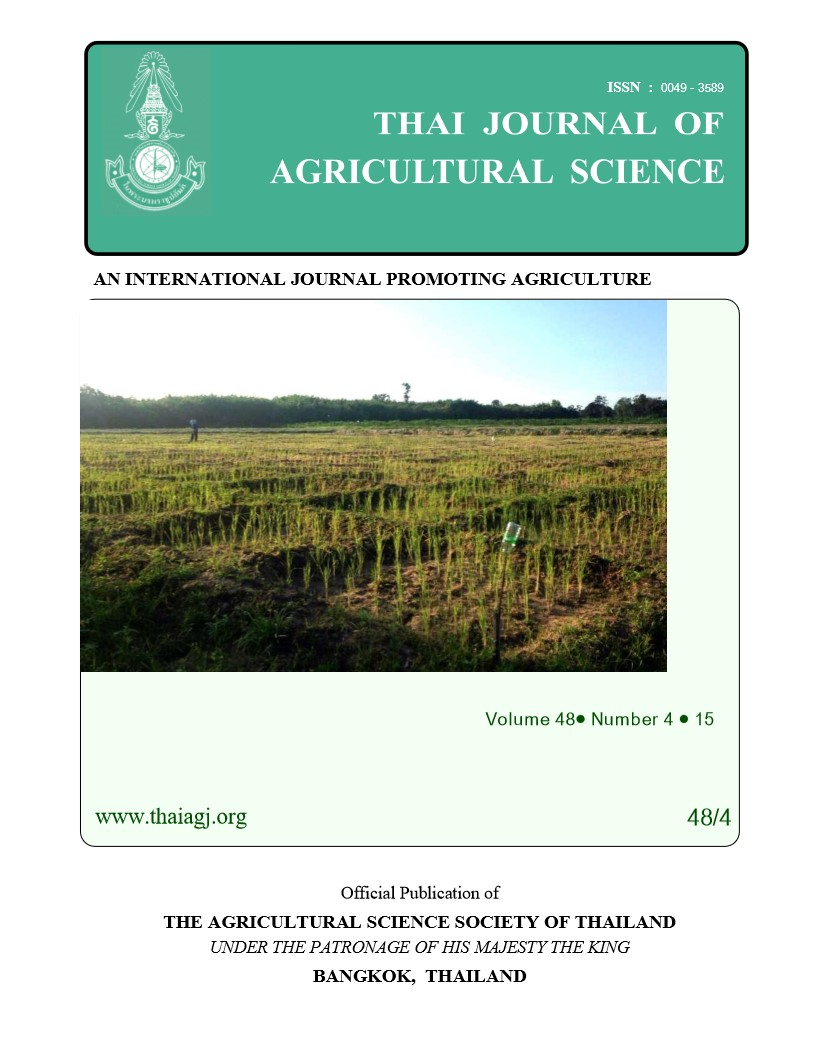Principal Components Regression of Body Measurements in Five Strains of Locally Adapted Chickens in Nigeria
Main Article Content
Abstract
This study aimed at unfolding the interdependence among the linear body measurements in chickens and to predict body weight from their orthogonal body measurements using principal component regression. Body weight and seven biometric traits that are; body length (BL), breast girth (BG), wing length (WL), wing span (WS), thigh length (TL), shank length (SL), keel length (KL) were measured on eight week old chickens chickens comprising 53 each of Marshal (M), Marshal x naked-neck (MNk), Marshal x normal-feathered (MNm), Naked-neck (Nk) and Normalfeathered (Nm). General linear model, factor and partial least squares procedures of statistical analysis system (S.A.S 9.1) were used to compute the variations among the five genotypes. Pearson correlations between body weight and biometric traits were positive and highly related (r = 0.614-0.937, 0.518-0.929 and 0.496-0.943, 0.411-0.959 and 0.760-0.961 in M, MNk, MNm, Nk and Nm genotypes respectively). In all the five genotypes studied, only the first principal component (PC) exhibited eigenvalues greater than 1. Using Bartlet test, observed communalities ranges from 0.787 to 0.946 in M, 0.784 to 0.957 in MNk, 0.685 to 0.928 in MNm, 0.818 to 0.959 in Nk and 0.930 to 0.998 in Nm. This offered credibility to the relevance of the principal component regression. In principal component regression models, TL alone accounted for 76.21%, 62.72%, and 75.52% of the variation in BW for M, MNm and Nk respectively. The best prediction equation (R2=85.61%, R2=85.52%) for BW was obtained when BG was included in the model for M and Nk respectively. BG alone accounted for 91.66% and 69.05% of the variation in BW for Nm and MNk respectively. Also, In MNm chickens, the best prediction equation (R2=70.88%) for BW was obtained when KL was included in the model. It can be concluded that the use of principal components’ scores from chickens’ morphometric traits was more appropriate than the use of original traits in body weight prediction as multicollinearity problems were eliminated.


